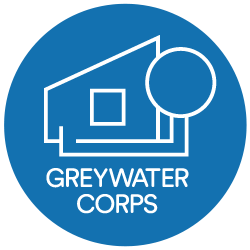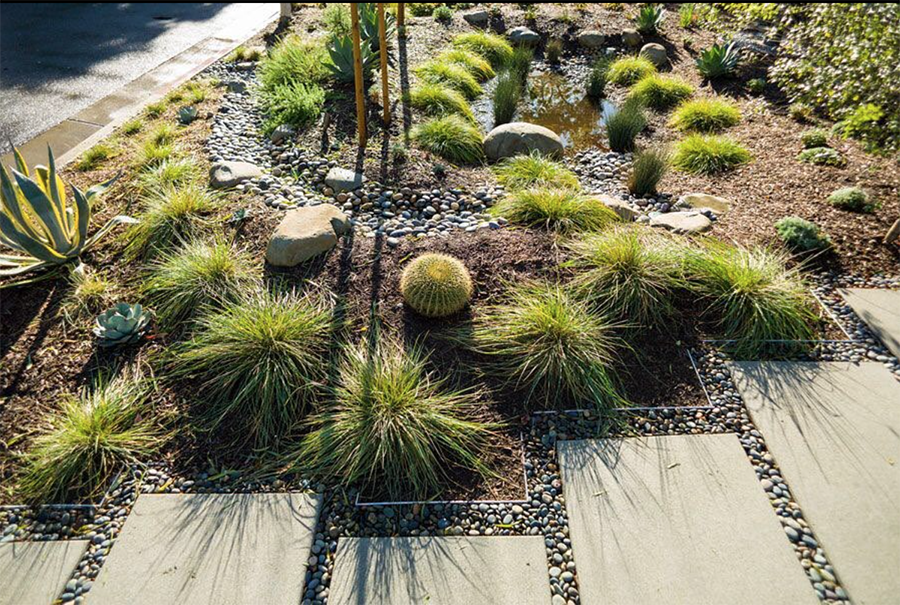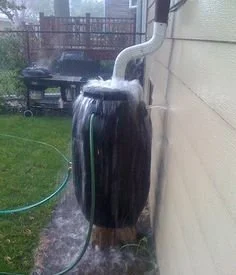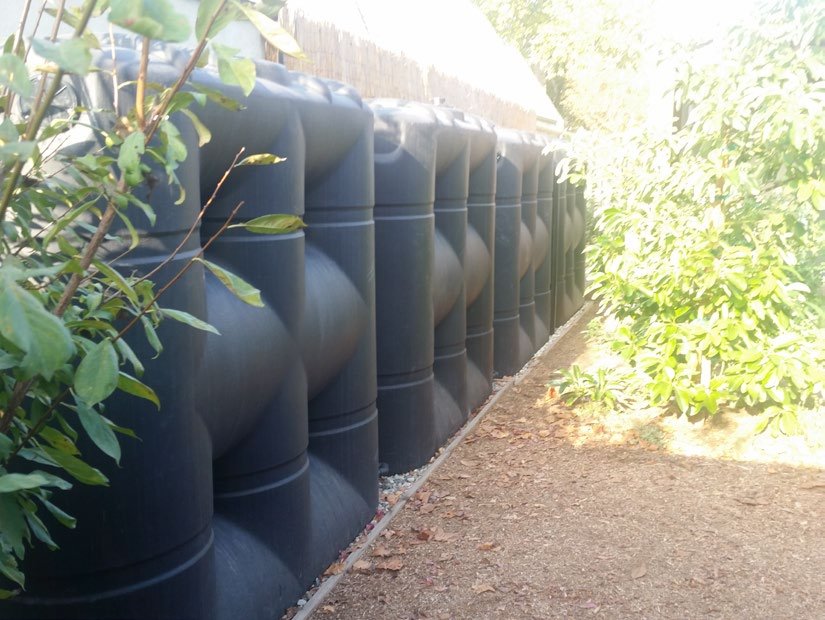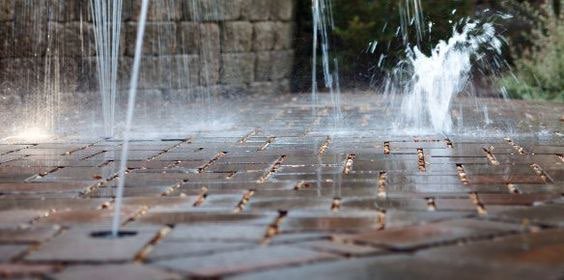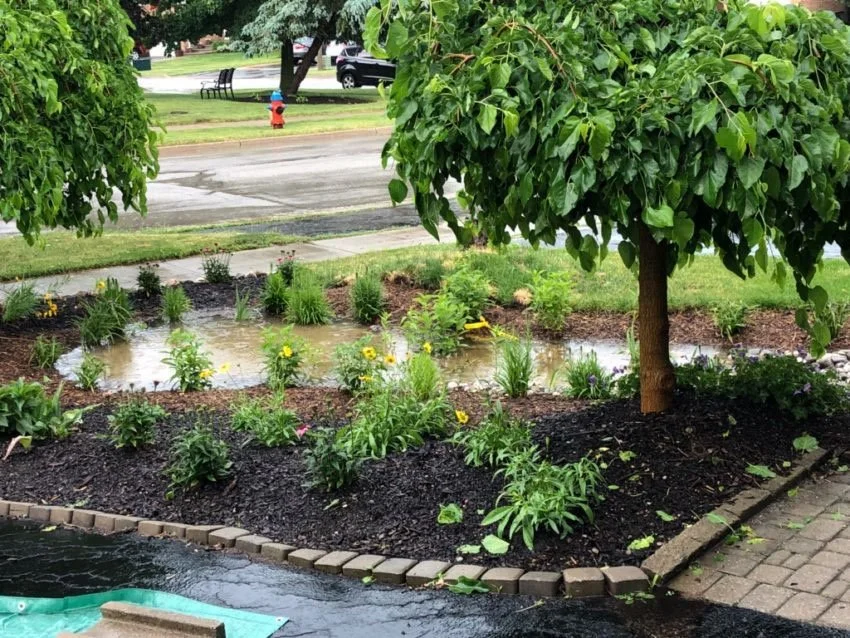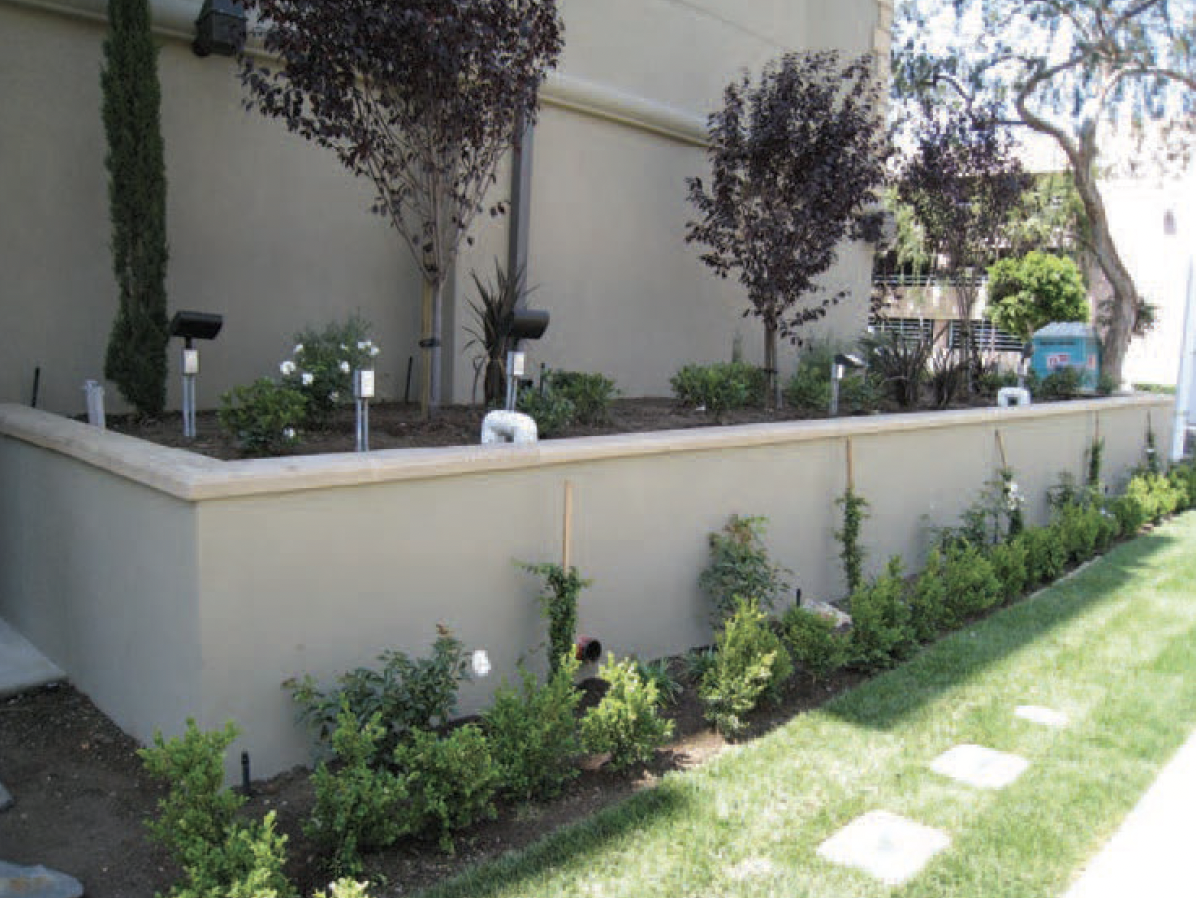Low Impact Development
Low Impact Development (LID) is a stormwater management strategy designed to minimize urban runoff and the effects of new construction on the watershed. If you are undertaking a construction or remodel project in California, there’s a high chance you will have to satisfy these requirements to obtain a Certificate of Occupancy.
Rain gardens and permeable pavement can help meet LID requirements
Many California cities and counties now have LID ordinances. Builders are required to mitigate the effects of new construction through a variety of Best Management Practices (BMPs) which keep stormwater out of the streets and in the land.
Imagine Los Angeles a hundred years ago: miles of open wilderness, plants, trees, and permeable soil. When it rained, almost all of the water would end up percolating back into the soil and replenishing the aquifer below. These days, most of L.A. covered with impermeable roads, driveways, and buildings. Stormwater runs off into the street, picking up oil and debris, and ends up in the ocean, where it causes pollution and harm to the watershed.
LID ordinances are well-intentioned but end up creating a hurdle for architects and homeowners to satisfy these requirements.
The fact is that LID is primarily concerned with watershed protection – not water conservation. Greywater Corps got our start in water recycling systems and prioritize sustainability: designing systems that fulfill LID requirements and save water.
Do you need a Civil Engineer?
If your project involves retaining walls, grading & drainage, or is complicated by hillside ordinances, then yes. But often you do not.
Civil engineers tend to rely on boilerplate plans with little regard to cost instead of thoughtfully addressing individual concerns. In many cases, the experts at Greywater Corps can provide creative and effective LID solutions that are responsive to clients’ needs and budget.
LID Strategies
Rain Barrels
Rain barrels (40 to 55 gallons) are often sufficient to fulfill requirements for smaller projects. This can be one of the most economical LID interventions, although not very attractive. Usually this will require several barrels banked together, or barrels at each downspout.
Midsize Rain Tanks
Rain tanks between 100 and 500 gallons are perhaps the most common LID strategy. “Slimline” tanks can fit into narrow side yards, and tanks can be connected together to increase capacity.
Line of 530-gallon slimline tanks
Large Rain Cisterns
On bigger sites, large aboveground tanks (500-5000 gallons) can be installed to satisfy LID while harvesting rainwater for irrigation or nonpotable indoor use. Stored rainwater can also be a source of emergency water for earthquakes or firefighting.
5000 gallon galvanized steel tank
Permeable Pavement
Permeable pavement allows rainwater to drain into the soil below. Almost always a better route than pouring concrete and having to mitigate the runoff.
Permeable pavers
Rain Gardens
Rain gardens are depressed areas in the landscape that fill up during a rain event, allowing that water to slowly percolate back into the soil over the next day or two. They are an inexpensive and low-maintenance option; perfect if you have the space.
Rain garden
Underground Storage & Reuse
Underground cisterns boast massive storage and can be one of the only options if space is limited or in certain hillside conditions where infiltration (i.e. dry wells) is problematic due to concerns with erosion.
4000 gallon underground rainwater tank
Infiltration Chambers or Dry Wells
Essentially void spaces underground wrapped in filter fabric that fill up with water during heavy rains and then percolate it back into the soi over the next few days. Low maintenance if done right.
Eco Rain modules – the hole can either be
lined (as shown) for storage and reuse, or
unlined for infiltration into the earth
Planter Boxes
Large planter boxes hold water during a rain event and dispel it through evapotranspiration. This is one of the more elaborate LID strategies, requiring integration into the architectural plans.
LID planter box
Our Services
We offer a one-stop shop for LID, providing both design and installation. We can navigate the extensive, often byzantine requirements, put together drawing sets and submissions, and obtain plan approvals. As installers, we have a much better understanding of field requirements and costs, and will provide a quote to install the system.
About Us
Greywater Corps are experts in LID and rainwater harvesting systems. Our team consists of Architects, Engineers, and Installers with years of field experience and hundreds of installations. This translates to a deep knowledge of what types of system and components work best.
